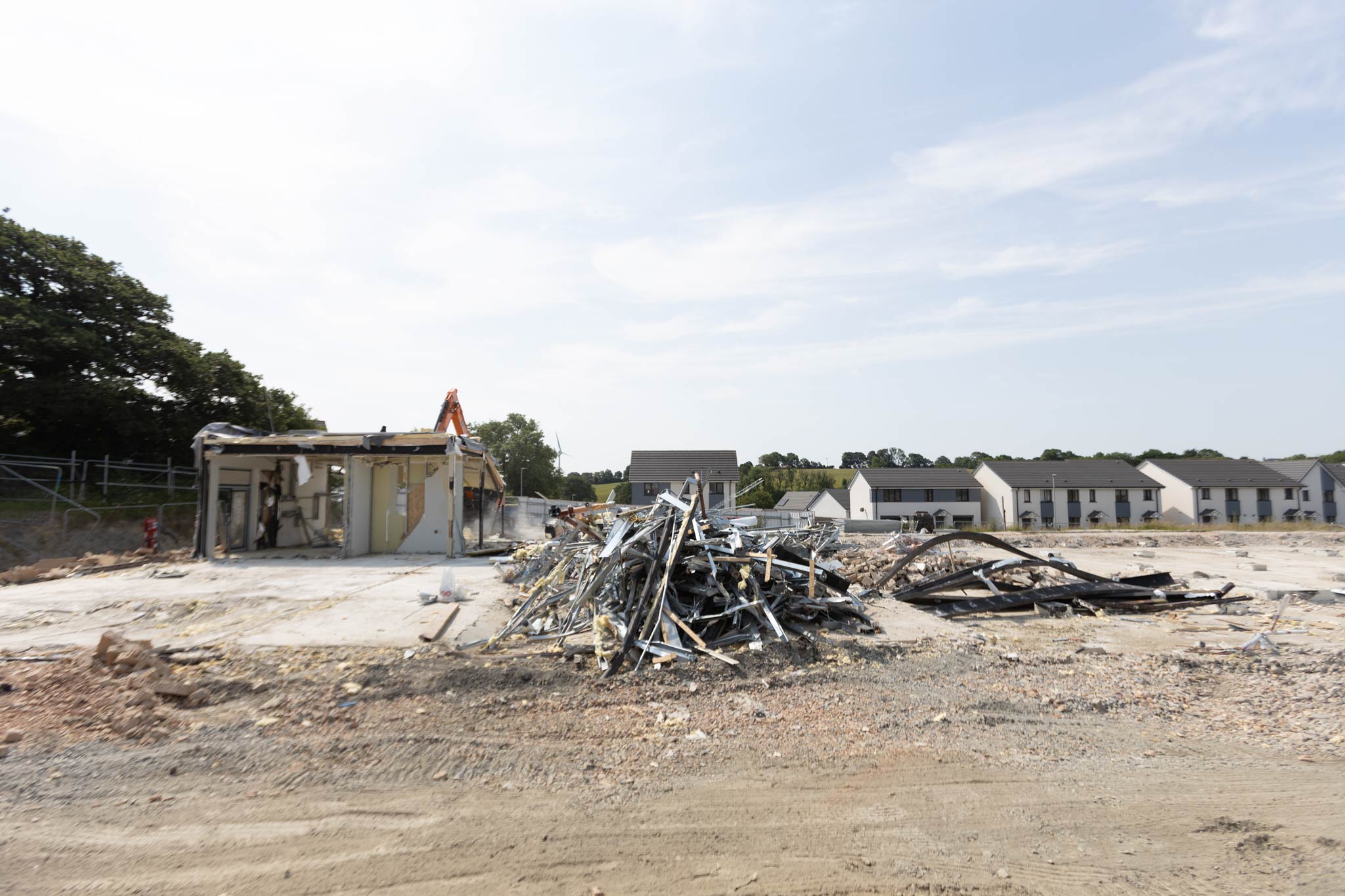Contaminated land remediation in Cornwall, where science meets sustainability in a bid to restore our environment. Contaminated land poses a significant threat to ecosystems, public health, and the overall well-being of communities. However, the innovative solutions being implemented in Cornwall are changing the game. This vital field of study combines cutting-edge scientific techniques with a deep commitment to sustainable practices, resulting in a win-win situation for both the environment and future generations. In this article, we will look into the science behind contaminated land remediation in Cornwall, exploring the processes, technologies, and strategies employed to tackle this pressing issue. Read on to discover these sustainable solutions that are paving the way for cleaner future and safer spaces.
Understanding the Science behind Land Contamination
Contaminated land refers to soil or groundwater that has been polluted by various substances, such as heavy metals, petroleum hydrocarbons, pesticides, or industrial chemicals. Understanding the science behind land contamination is crucial for effective remediation efforts. Contamination can occur through various pathways, including industrial activities, improper waste disposal, or accidental spills. Factors such as soil type, climate, and hydrogeology play a significant role in the transport and fate of contaminants in the environment.
Remediating contaminated land requires a multidisciplinary approach, bringing together experts from fields such as environmental science, geology, chemistry, and engineering. These experts work collaboratively to identify the extent of contamination, assess potential risks, and develop tailored remediation plans. By combining scientific knowledge with advanced technologies, they aim to eliminate or reduce the presence of contaminants, restoring the land to a safe and sustainable state.
Contaminated land remediation techniques can be broadly classified into two categories: ex-situ and in-situ. Ex-situ techniques involve excavating and removing the contaminated soil or groundwater for treatment at off-site facilities. In-situ techniques, on the other hand, involve treating the contamination in place, minimizing disturbance to the surrounding environment. Both approaches have their advantages and limitations, and the choice of technique depends on factors such as the type and extent of contamination, site conditions, and project goals.
Common Contaminants Found in Cornwall
Cornwall, with its rich mining history and industrial past, is no stranger to land contamination. The region has faced challenges related to heavy metals, such as arsenic, cadmium, and lead, as well as hydrocarbons from mining activities and petroleum spills. These contaminants can persist in the environment for long periods, posing risks to human health and ecosystems.
Heavy metals, in particular, can accumulate in plants, animals, and humans, leading to a range of health problems, including neurological disorders, kidney damage, and developmental issues in children. Hydrocarbon contamination can contaminate groundwater and soil, affecting the quality of drinking water and inhibiting the growth of plants and microorganisms. Identifying and addressing these contaminants is crucial to protect the environment and safeguard public health.
The Impact of Contaminated Land on the Environment and Public Health
The impact of contaminated land on the environment and public health cannot be overstated. Contaminants can migrate through soil and groundwater, reaching nearby water bodies and affecting aquatic ecosystems. They can also enter the food chain, bioaccumulating in plants and animals, and ultimately posing risks to human health. Additionally, contaminated land can have economic implications, reducing property values and limiting potential land use.
In Cornwall, the legacy of mining activities has left behind a significant amount of contaminated land, which poses ongoing challenges for the region. The presence of heavy metals in soil and waterbodies has led to the loss of biodiversity and degradation of ecosystems. Furthermore, the proximity of contaminated sites to residential areas increases the risk of exposure to harmful substances, impacting the well-being of local communities. Addressing these issues requires a comprehensive understanding of the contaminants and their potential pathways, enabling targeted remediation efforts.
Remediation Techniques and Their Effectiveness
Remediating contaminated land involves a range of techniques and technologies, each tailored to the specific type and extent of contamination. Traditional methods, such as excavation and off-site treatment, have been effective in addressing certain types of contamination. However, these approaches can be costly, time-consuming, and disruptive to the environment.
To overcome these limitations, innovative remediation technologies have emerged, offering more sustainable and efficient solutions. Bioremediation, for example, utilises microorganisms to break down contaminants into less harmful substances. This approach is particularly effective for hydrocarbon contamination, as certain bacteria can metabolise petroleum-based compounds. Phytoremediation, on the other hand, involves using plants to extract, stabilise, or degrade contaminants from soil or water. Certain plant species have the ability to accumulate heavy metals in their tissues, facilitating their removal from the environment.
In addition to biological methods, physical and chemical remediation techniques are also employed. Soil vapour extraction uses vacuum pumps to remove volatile contaminants from the soil, while chemical oxidation involves the use of chemicals to break down or neutralise contaminants. These innovative techniques offer sustainable alternatives to traditional remediation methods, reducing costs, minimising environmental impact, and achieving effective results.
Case Studies of Successful Land Remediation Projects in Cornwall
Cornwall has been at the forefront of contaminated land remediation, with numerous successful projects showcasing the effectiveness of sustainable techniques. One such project involved the remediation of a former mine site contaminated with heavy metals. By combining phytoremediation and soil amendments, the site was transformed into a thriving ecosystem, with native vegetation and improved soil quality. This approach not only remediated the contamination but also restored the ecological balance of the area.
Another notable project focused on the remediation of a petroleum-contaminated site near a water source. Instead of excavation, in-situ bioaugmentation was used, introducing specialised bacteria to break down the hydrocarbons. This approach reduced the overall project cost and minimised disturbance to the surrounding environment while achieving successful remediation.
These case studies highlight the potential of sustainable remediation techniques to restore contaminated land in Cornwall. By harnessing the power of nature and innovative technologies, these projects demonstrate that a cleaner and healthier future is within reach.
The Role of Government Regulations in Contaminated Land Management
Government regulations play a crucial role in managing contaminated land and ensuring that remediation efforts meet stringent standards. In Cornwall, the Environment Agency and local authorities work together to enforce regulations and monitor compliance. These regulations define acceptable levels of contamination, establish guidelines for remediation, and outline responsibilities for various stakeholders.
Environmental Impact Assessments (EIAs) are often required for proposed development projects in potentially contaminated areas. These assessments help identify potential contamination risks and guide appropriate remediation measures. Furthermore, regulatory frameworks encourage responsible parties to take responsibility for remediating contaminated sites, ensuring that the burden does not fall solely on taxpayers.
Government regulations also promote sustainable practices by incentivising the use of innovative and environmentally friendly remediation techniques. By encouraging the adoption of these practices, regulations drive the industry towards more sustainable and effective solutions, benefiting the environment, communities, and future generations.
The Future of Contaminated Land Remediation in Cornwall
As technology continues to advance and our understanding of contaminants deepens, the future of contaminated land remediation in Cornwall looks promising. The integration of cutting-edge scientific research, sustainable practices, and innovative technologies will drive the development of more efficient and cost-effective solutions. Emerging techniques, such as nanoremediation and electrokinetic remediation, show great potential for addressing complex contamination challenges.
Collaboration between government agencies, research institutions, and industry stakeholders will be crucial in advancing the field of contaminated land remediation. Knowledge sharing, research funding, and the development of standardised protocols will support the implementation of sustainable practices and ensure the long-term success of remediation efforts.
Furthermore, public awareness and education are essential in garnering support for contaminated land remediation initiatives. By highlighting the benefits of sustainable solutions, engaging the community, and promoting environmental stewardship, we can create a shared responsibility for the protection and restoration of our land.
Benefits of Sustainable Land Remediation Practices
Investing in sustainable land remediation practices brings numerous benefits to Cornwall and beyond. Firstly, these practices contribute to the preservation and restoration of ecosystems, enhancing biodiversity and improving the overall health of natural habitats. By creating a healthier environment, sustainable remediation also supports the well-being and quality of life for local communities.
Secondly, sustainable land remediation practices promote economic growth and development. Remediated land can be repurposed for various uses, such as housing, agriculture, recreation, or renewable energy projects. This not only creates employment opportunities but also drives investment and tourism in the region.
Lastly, investing in sustainable land remediation aligns with global efforts to combat climate change and achieve sustainability goals. By reducing the release of contaminants into the environment and promoting the use of renewable energy sources, Cornwall can contribute to a greener and more sustainable future.
Conclusion: The Importance of Investing in Contaminated Land Remediation for a Sustainable Future in Cornwall
Contaminated land remediation in Cornwall is not only a scientific endeavor but also a commitment to sustainability and the well-being of our planet. By understanding the science behind land contamination and implementing innovative remediation techniques, we can restore the health of our ecosystems and protect public health.
Through successful case studies, we have seen the transformative power of sustainable solutions in Cornwall. These projects have demonstrated that by combining scientific expertise, advanced technologies, and a deep commitment to sustainability, we can achieve effective and long-lasting remediation outcomes.
As we look to the future, collaboration, education, and government regulations will play vital roles in advancing the field of contaminated land remediation. By investing in sustainable practices, we can create a cleaner, healthier, and more sustainable future for Cornwall and inspire positive change worldwide. Let us embrace the science, the innovation, and the commitment to sustainability that define contaminated land remediation in Cornwall, for a brighter tomorrow.


